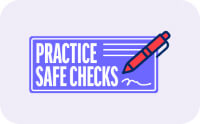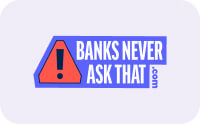What we’re doing to help protect you
We proactively monitor accounts and will contact you if we see certain types of questionable activity. We stay on top of industry standards for security, and we use a variety of tech tools including encryption and firewalls to provide round-the-clock protection.
How you can help protect yourself
A few good ways to start: Stay up-to-date on current scams. Follow good security practices. Go paperless.Disclosure 1 And use Truist online and mobile bankingDisclosure 2 to get access to helpful security tools including alertsDisclosure 3 , card controls, and secure payment options.
Protecting what matters How to spot phishing scams
These best practices can help you protect your personal info and better spot fishy cyber scammers.
Suspicious messages? How to avoid phishing scams | Truist
What is a phishing scam, and how do you protect yourself? Truist Money and Mindset tells you four common types of spam messages, how they work, and how to avoid them.
Protecting what matters 7 tips for creating secure passwords
When it comes to the security of your personal data, a strong password is one of the best defenses.
Create Secure Passwords & What To Do If They’re Compromised
Learn how to create secure passwords to protect your accounts and discover the essential steps to take if your passwords are ever compromised.
Protect what matters Help protect your small business from check washing fraud
Check washing is one of many threats that require vigilance from small businesses.
Help protect your small business from check washing fraud
Small businesses owners can be vigilant against check fraud scams with prevention techniques and secure payment systems to mitigate financial fraud risks.
Call us.
Reach a real live person Monday through Friday, 8 am to 8 pm ET, or Saturday, 8 am to 5 pm ET. Or get 24-hour automated assistance. Call 844-4TRUIST (844-487-8478), or outside the U.S., call +1-910-914-8250. To report fraud, 24/7, select option 1.
Meet with an advisor.
Find a specific Truist professional by name, location, or financial need.


